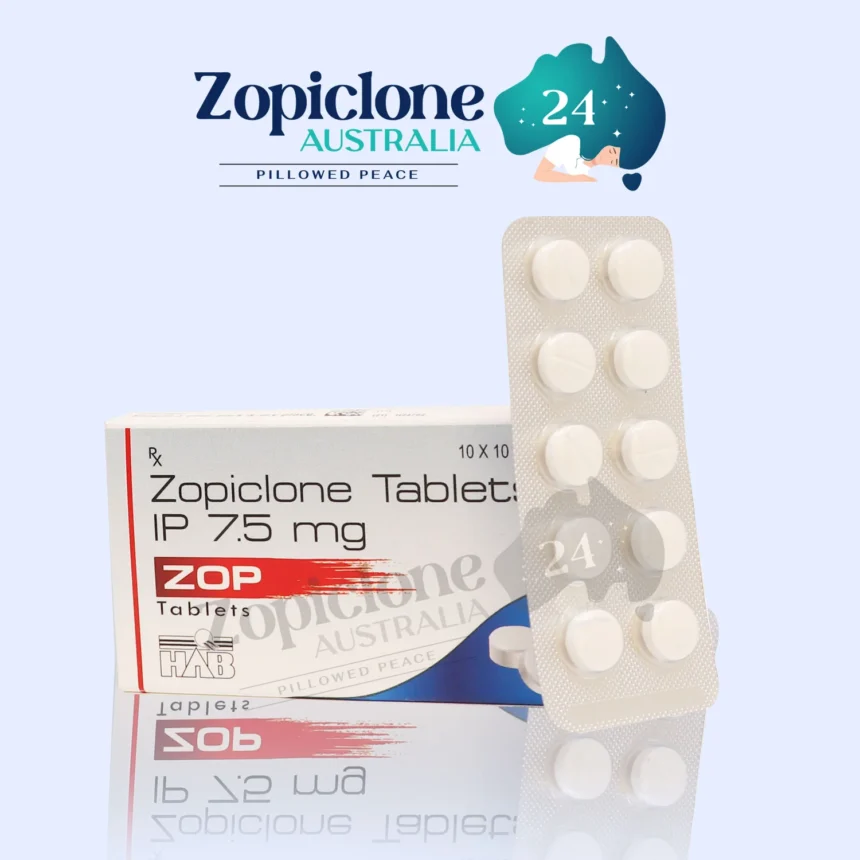Zopiclone is a prescription medication primarily used for the short-term management of insomnia. As a member of the non-benzodiazepine class of hypnotics, it functions by affecting the brain’s neurotransmitters, promoting sleepiness and facilitating a quicker onset of sleep. In this blog, we will delve into the details of Zopiclone, specifically the Zopiclone 7.5 MG dosage, its uses, side effects, precautions, and more.
What is Zopiclone?
Zopiclone, marketed under various brand names, is an effective medication for treating sleep disorders. It is often preferred due to its relatively rapid action and shorter duration of effect compared to traditional benzodiazepines. The medication acts on the GABA receptors in the brain, enhancing the inhibitory effects of gamma-aminobutyric acid (GABA), which is a neurotransmitter that promotes sleep and relaxation.
Indications
Zopiclone is primarily indicated for the short-term treatment of insomnia, characterized by difficulty falling asleep, frequent awakenings during the night, or waking up too early. The typical treatment duration ranges from a few days to a couple of weeks. Long-term use is generally discouraged due to the risk of dependence and tolerance.
Dosage and Administration
Zopiclone is available in various strengths, with 7.5 MG being the most commonly prescribed dosage for adults. Here’s how it is typically administered:
Dosage: The standard starting dose for adults is 7.5 MG taken just before bedtime. For older adults or those with liver issues, a lower dose (3.75 MG) may be recommended.
Administration: Zopiclone should be taken orally, swallowed whole with water. It is advised to avoid taking the medication with food, as this may delay its onset of action.
Duration of Treatment: Patients are generally advised to use Zopiclone for a maximum of 2-4 weeks to minimize the risk of dependence.
Mechanism of Action
Zopiclone’s sedative effects stem from its interaction with GABA-A receptors in the central nervous system (CNS). By enhancing the effects of GABA, it helps to induce sleepiness and reduce the time it takes to fall asleep. Unlike benzodiazepines, Zopiclone has a unique chemical structure that provides similar sedative effects with a potentially lower risk of some side effects.
Benefits of Zopiclone
Rapid Onset of Sleep: Zopiclone typically works within 30 minutes, making it effective for individuals who have trouble falling asleep.
Fewer Morning Hangover Effects: Many users report less grogginess the next day compared to traditional sleep medications.
Improved Sleep Quality: Zopiclone helps reduce nighttime awakenings, allowing for a more restorative sleep experience.
Side Effects
While Zopiclone is generally well-tolerated, it may cause side effects in some individuals. Common side effects include:
Drowsiness: While intended, excessive drowsiness can be problematic.
Dry Mouth: Many users report experiencing a dry mouth.
Dizziness: Some may feel lightheaded, particularly when standing up.
Memory Problems: Anterograde amnesia (difficulty forming new memories) can occur.
Gastrointestinal Disturbances: Nausea, vomiting, and changes in appetite have been reported.
Serious Side Effects
In rare cases, Zopiclone may lead to more severe reactions, including:
Allergic Reactions: Rash, itching, swelling, or difficulty breathing.
Depression or Mood Changes: Worsening of depression or other mood disorders.
Dependence: Prolonged use can lead to physical and psychological dependence.
If any severe side effects occur, it is essential to seek medical attention immediately.
Precautions
Before starting Zopiclone, it’s crucial to discuss your medical history with a healthcare provider. Here are some considerations:
Pregnancy and Breastfeeding: Zopiclone is generally not recommended during pregnancy or breastfeeding due to potential risks to the baby.
Liver and Kidney Function: Individuals with impaired liver or kidney function may require dosage adjustments.
Drug Interactions: Zopiclone can interact with other medications, including alcohol, opioids, and certain antidepressants, which may enhance sedative effects and increase the risk of side effects.
Dependence and Withdrawal
One of the primary concerns with Zopiclone is the potential for dependence, particularly with long-term use. Tolerance can develop, requiring higher doses to achieve the same effect, which can lead to a cycle of increased dosage and dependence.
Signs of Dependence
Cravings: A strong desire to take the medication.
Withdrawal Symptoms: Symptoms such as anxiety, insomnia, and irritability upon stopping the medication.
Loss of Control: Taking more than prescribed or for longer than recommended.
To minimize the risk of dependence, it is advised to use Zopiclone only for short durations and under strict medical supervision.
Alternatives to Zopiclone
For individuals who may be concerned about the risks associated with Zopiclone, there are alternative treatments for insomnia:
Cognitive Behavioral Therapy for Insomnia (CBT-I): A structured program that helps individuals change their thoughts and behaviors related to sleep.
Melatonin Supplements: These may help regulate sleep-wake cycles, especially for those with circadian rhythm disorders.
Lifestyle Changes: Improving sleep hygiene by establishing a regular sleep schedule, creating a comfortable sleep environment, and avoiding stimulants can be effective.
Conclusion
Zopiclone 7.5 MG can be an effective short-term solution for individuals struggling with insomnia. However, it is essential to use this medication responsibly and under the guidance of a healthcare professional. Understanding its benefits, potential side effects, and risks of dependence can help users make informed decisions about their sleep health.
If you’re considering Zopiclone as a treatment option, consult with your doctor to discuss whether it is suitable for your situation and to explore all available options. Remember, good sleep is crucial for overall health, and finding the right treatment plan can make all the difference in achieving a restful night’s sleep.


